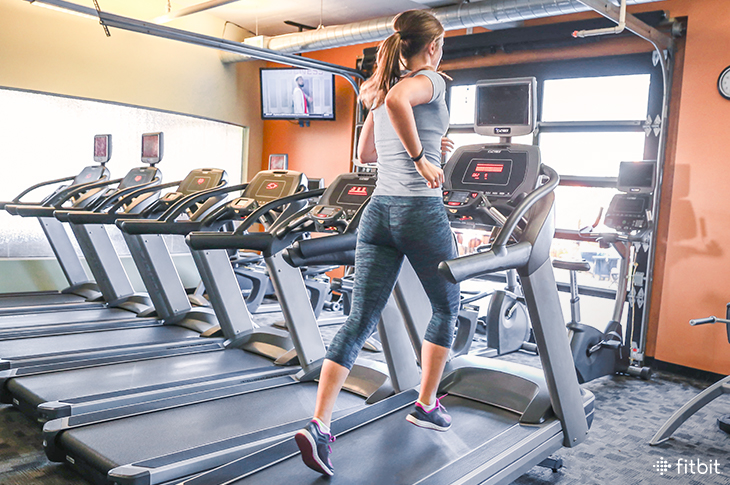
Aspiring runners quickly learn the mantra, “Hills are my friend,” since nothing builds strength and speed quite like climbing. But what are you to do when you’ve got a spring race on your schedule and bad weather is keeping you inside? Easy: Get cozy with the incline feature on your treadmill.
With full control over the pitch and length of the hills you can tackle, the treadmill can actually give you an even more varied, intense, and efficient workout than you might be able to create outdoors.
“It’s a quick and easy way to get yourself really working hard,” says Ian Sharman, an elite runner and the head coach of Sharman Ultra Endurance Coaching in Bend, Oregon.
The next time you opt to run in place, try one of the hill workouts below.
TREADMILL HILL WORKOUTS
Attack a Series of Small Hills
Regardless of your fitness level, running a series of short hills—what coaches often call doing hill repeats or intervals—will allow you to raise your heart rate and intensity higher over the course of a workout than you would doing a steady-state effort for the same length of time.
On the treadmill, doing hill repeats simply means alternating between running hard against a slope and recovering at a slower speed and at a low incline or on a level surface. Many machines have pre-programmed workouts you can try, but eventually you’ll want to experiment with different inclines, speeds, and interval durations.
For example, a challenging option could be a waterfall ladder. Start by increasing the pace to a fast-but-comfortable speed that you feel you could sustain for an hour. Then bump up the incline to 2 percent and maintain that for 5 minutes. Return the incline to zero percent and recover at your original pace for 5 minutes. Next, set the incline to 3 percent for 4 minutes then recover for 4 minutes at no incline. For the final “work” segment, increase the incline to 4 percent for 3 minutes, then five percent for 2 minutes and, finally, six percent for 1 minute before taking the incline back down to zero and cooling down at a slower pace.
One note: When performing workouts, give yourself the freedom to adjust them on the fly—especially when they’re new and you’re learning what you can handle. “After a couple segments of a hill gradient, if you find your body is struggling, you have the flexibility to say, ‘Today I’m not quite fit enough to do what I intended’ and you can make it a little easier,” says Sharman.
Go Long
While intervals are great for accumulating time in your peak heart rate zone, a long, steady climb can give you a solid chunk of cardio minutes with less muscular stress than going faster. Adjust the incline to a moderate slope, such as 3 to 5 percent, and do a steady run at a manageable pace for 30 to 45 minutes. “The incline allows you get your heart rate up—get your [cardiovascular] engine to improve—without as much risk of injury,” says Sharman. Use a variety of slopes on different days to change the training stimulus and muscular recruitment.
Climb a Mountain
For more advanced athletes, setting the incline to the max or advancing to something like a NordicTrack Incline Trainer—which can accommodate a 40-percent slope—can give you a major performance edge. Steep, sustained climbs build muscle on the back of your legs that you need for both power and speed. “The steeper it gets, the more power-based your workout is,” says Sharman. “The reason for any runner to put the incline up to 20 percent or more, even if training for flat races, is that it will help with leg strength.”
Sprinting up steep hills is a safe, if intense, way to max out all of your systems—heart, lungs, brain, nerves, and muscles—expanding what you’re able to do at lesser intensities. But you’ll need to keep the efforts short. “Your heart rate accelerates very quickly” says Sharman. You’ll hit max effort in 10 to 15 seconds, then you’ll want to quickly reduce the incline and speed to a recovery level for several minutes. Wait until your heart rate comes down to the low end of your cardio zone before cranking it up to max again. Repeat 8 to 10 times.
Another option is to put the incline very high and reduce the speed so that you’re hiking up the slope, gaining strength and range of motion with less aerobic intensity and very little impact. “People underestimate how useful useful hiking and walking are to fitness and recovery,” says Sharman. “Like any other element of training, inclines can be intense and short or slower and more sustainable.”
This information is for educational purposes only and is not intended as a substitute for medical diagnosis or treatment. You should not use this information to diagnose or treat a health problem or condition. Always check with your doctor before changing your diet, altering your sleep habits, taking supplements, or starting a new fitness routine.

If you have questions about a Fitbit tracker, product availability, or the status of your order, contact our Support Team or search the Fitbit Community for answers.
Please note: Comments are moderated and may not appear immediately after submission.